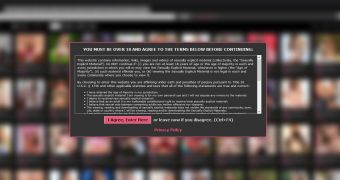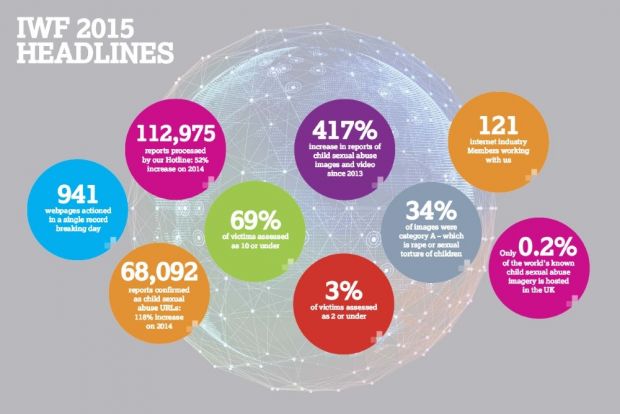The Internet Watch Foundation (IWF) released its annual report today, and the organization says it reported and helped authorities take down 68,092 files containing illegal child sexual abuse imagery, representing an 118 percent increase over the past year and a 417 percent increase over the past two years.
This increase in the number of detected child abuse images does not necessarily mean that there are more people involved in these types of illegal and heinous crimes, but show an increase in the organization's efficiency after UK authorities gave it free range to roam the Internet and report illegal images in April 2014
One in five sites asks users to pay before accessing the illegal content
The report highlights a couple of findings. The IWF found that 69 percent of victims were children of age ten or under. Of these, 1,788 images depicted children of age two or under. Even worse, 34 percent of the total of 68,092 images were category A content, depicting rape or sexual torture of children.
The IWF also highlights that of all images, 78 percent were hosted on dedicated image hosting sites. From the total number of Web pages and domains it identified, 21 percent were running as a commercial operation, meaning the site operators were charging customers in order to view their illegal material.
During the past two years, the IWF also noted a rising trend in how the websites from this latter category were operated. According to the organization, criminals are setting up legal sites dedicated to adult pornography, and are creating hidden sections on these sites for viewing child abuse imagery.
Child abuse images are hidden in plain sight
These sections are accessed via hidden links, or by typing a special URL manually in your browser address bar. The number of such sites has increased, and their proliferation has also started creating legal issues in the prosecution of people viewing the illegal content.
In the past, most websites harbouring child abuse imagery were running on the Dark Web, accessible via TOR. Because these types of sites were volatile, people accessing them would resort to saving the illegal images on their computers.
Now, because these images are secretly hosted on "legitimate" sites, in secret sections, these services are more reliable and have a greater uptime. Offenders don't feel the need to save the images to their computers because they know they'll find them online.
In legal terms, it is much harder to prove intent to view child sexual abuse images when accessing an image, compared to when the image is found stored on a hard drive.
Softpedia readers can download the Internet Watch Foundation's 2015 Annual Report for more details and other related statistics.

 14 DAY TRIAL //
14 DAY TRIAL // 

